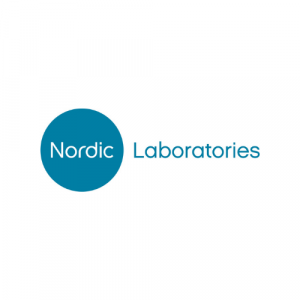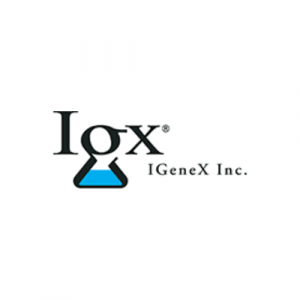

Are you constantly hungry, even right after a meal? Or found that losing weight is an uphill battle, no matter how hard you try? These experiences can be frustrating and may be signs of a hidden imbalance in your body’s communication system. The key to understanding this challenge lies in a powerful hormone called leptin. By learning how to increase leptin sensitivity, you can restore your body’s natural signals, regain control over your appetite, and find a more sustainable path to health and vitality.
Leptin is a peptide hormone secreted primarily by white adipose tissue (fat cells) in proportion to the body’s fat reserves. It is often called the “satiety hormone” because it acts as a long-term messenger, traveling to the brain (specifically- the hypothalamus) to signal that the body has sufficient energy stores. When the brain receives this signal, it responds by reducing the drive to eat and increasing the rate of energy expenditure, thus maintaining a balanced metabolism. Leptin levels are a direct reflection of long-term body fat mass, creating a continuous feedback loop that helps the body maintain a stable weight. A healthy leptin system ensures the brain is appropriately informed of its fuel reserves, preventing the persistent hunger and slowed metabolism that can result from a communication breakdown..
Leptin resistance occurs when your brain’s communication with your fat cells breaks down. Despite having plenty of leptin circulating in your bloodstream, your brain doesn’t “hear” the message to stop eating. A central mechanism of leptin resistance is chronic hyperleptinemia, where the brain becomes desensitized to persistently high levels of leptin. This constant high-volume signal can overwhelm the brain’s receptors, causing them to become less responsive and dulling the satiety message.
Beyond simple desensitization, chronic inflammation in the hypothalamus is a major documented cause of leptin resistance. This inflammation can be driven by a diet high in processed sugars and fats, as well as a lack of consistent sleep and unmanaged psychological stress. The inflammation itself can directly impair leptin receptors, preventing them from recognizing the hormone.
A third mechanism involves the blood-brain barrier (BBB). Elevated levels of free fatty acids, often from a high-fat diet, can impair the transport of leptin into the brain, effectively blocking the hormone from reaching its target neurons. This is a self-perpetuating cycle where the accumulation of fat leads to high leptin, which, in a state of inflammation, leads to resistance. The brain’s subsequent “starvation” response then lowers the metabolic rate and increases hunger, promoting further weight gain and a worsening of the resistance.
No, leptin does not increase appetite—it does the opposite. Leptin’s primary function is to decrease hunger and promote satiety. Its counterpart, ghrelin, is the “hunger hormone” that signals to the brain that it’s time to eat. These two hormones work in a delicate balance to regulate your appetite.
When the brain fails to receive the leptin signal due to resistance, it misinterprets the situation as one of starvation, even when the body has ample energy reserves. In response, the brain not only allows ghrelin’s hunger message to dominate but also reduces energy expenditure and compels the individual to seek and consume more food. This provides a comprehensive explanation for the persistent hunger and metabolic slowdown experienced in leptin resistance.
The concept of a leptin reset is centered on the idea that you can improve your brain’s ability to respond to leptin’s signals. This isn’t about using a leptin prescription or leptin for weight loss in a quick-fix manner, but rather about addressing the underlying causes of resistance.
By focusing on strategies to improve your sensitivity, you can naturally reduce your appetite, increase your metabolism, and empower your body to maintain a healthy weight. For more insights on this topic, you can learn how to lose weight by improving your leptin sensitivity.
Leptin and insulin are closely connected hormones, and resistance to one often mirrors resistance to the other. Both are key signals in the body’s energy regulation system, and high levels of both are common in overweight and obese individuals. Insulin enhances the secretion of leptin from fat cells, while leptin inhibits the secretion of insulin from the pancreas, illustrating a sophisticated regulatory loop.
Research suggests that high leptin levels may be a compensatory response to existing insulin resistance, with the body attempting to self-correct. This explains why individuals with lower leptin levels tend to have higher insulin sensitivity, highlighting a critical physiological dance where the body attempts to self-correct in the face of metabolic dysfunction. A holistic approach to addressing one often helps with the other, highlighting why a treatment plan for insulin resistance can also be beneficial for improving leptin sensitivity.
Adiponectin is another hormone produced by fat cells with potent anti-inflammatory properties and a well-documented ability to increase insulin sensitivity. A crucial distinction is that adiponectin levels are inversely correlated with obesity; they decrease as fat mass increases, unlike leptin.
obesity ∝ leptin / adiponectin
Leptin levels rise with obesity: As an individual gains fat, their fat cells produce and release more leptin, leading to higher circulating levels of the hormone.
Adiponectin levels fall with obesity: In contrast, as an individual gains fat mass, the production of adiponectin decreases.
This makes the adiponectin and leptin balance, or adiponectin leptin ratio, a particularly helpful biomarker for metabolic health. A higher ratio is consistently linked to a more favorable metabolic profile, while a low ratio is a strong predictor of cardiometabolic risk, often surpassing the predictive power of either hormone alone. You can learn more about how to increase adiponectin, the fat-burning hormone, to help improve your overall metabolic balance.
A common question is what foods have leptin. The answer is that foods do not contain leptin itself. Instead, the focus should be on building a whole foods diet that supports your body’s leptin signaling and reduces inflammation. Foods that help restore leptin sensitivity include:
Incorporating these into a healthy eating plan can be seen as a leptin reset diet menu that naturally supports hormonal balance.
Beyond diet, lifestyle factors are also critical. Regular physical exercise can improve leptin signaling in the brain. Adequate sleep is a non-negotiable component, as sleep deprivation decreases leptin levels while increasing ghrelin. Furthermore, managing chronic psychological stress is a vital part of a comprehensive plan, as it can reduce the brain’s sensitivity to leptin.
| How to Enhance Leptin Sensitivity | Recommendation | Rationale |
| Diet | Consume a diet rich in whole, unprocessed foods and limit processed sugars and unhealthy fats. | This approach reduces the chronic inflammation and elevated triglycerides that impair leptin signaling and transport across the blood-brain barrier, thereby improving the brain’s ability to respond to leptin. |
| Exercise | Engage in regular physical activity, including a combination of aerobic and strength training exercises. | Exercise improves leptin sensitivity by activating the same signaling pathways as leptin in the hypothalamus. It can also reduce circulating leptin levels and synergize with the hormone to promote weight loss. |
| Sleep | Prioritize 7-9 hours of quality, uninterrupted sleep per night. | Sleep deprivation disrupts the natural balance of appetite-regulating hormones, decreasing leptin levels and increasing ghrelin, which promotes a state of persistent hunger and leads to weight gain. |
| Stress | Implement effective stress management techniques, such as mindfulness, meditation, or deep-breathing exercises. | Chronic stress elevates cortisol and free fatty acids, which can worsen inflammation and directly reduce the brain’s sensitivity to leptin, making appetite control and weight management more difficult. |
Understanding what leptin is and what it does is the first step toward reclaiming your health. By addressing the root causes of resistance, such as inflammation and a diet of processed foods, you can work to improve leptin sensitivity and empower your body’s natural systems to manage appetite and weight. This is a journey of holistic health, moving beyond a simple calorie-counting model to a deeper understanding of your body’s unique needs. The most effective strategies for improving leptin sensitivity are those that address the underlying root causes of resistance. By focusing on a whole-foods diet, an anti-inflammatory diet, intermittent fasting, and healthy lifestyle choices, you can achieve a leptin reset and make lasting changes for a vibrant future.
Bouassida, A., Zalleg, D., Bouassida, S., Zaouali, M., Feki, Y., Zbidi, A., & Tabka, Z. (2006). Leptin, its Implication in Physical Exercise and Training: A Short Review. Journal of Sports Science & Medicine, 5(2), 172. https://pmc.ncbi.nlm.nih.gov/articles/PMC3827558/
Diep Nguyen, T. M. (2020). Adiponectin: Role in Physiology and Pathophysiology. International Journal of Preventive Medicine, 11, 136. https://doi.org/10.4103/ijpvm.IJPVM_193_20
Frühbeck, G., Catalán, V., Rodríguez, A., Ramírez, B., Becerril, S., Salvador, J., Colina, I., & Gómez-Ambrosi, J. (2019). Adiponectin-leptin Ratio is a Functional Biomarker of Adipose Tissue Inflammation. Nutrients, 11(2), 454. https://doi.org/10.3390/nu11020454
Girard J. (1997). Is leptin the link between obesity and insulin resistance?. Diabetes & metabolism, 23 Suppl 3, 16–24.
Ibrahim Abdalla, M. M. (2015). Ghrelin – Physiological Functions and Regulation. European Endocrinology, 11(2), 90. https://doi.org/10.17925/EE.2015.11.02.90
L., M., Ribalta, J., Arrieta, F., Aguilar, M., Obaya, J. C., A., J., Iglesias, P., Navarro, J., & Durán, S. (2023). Role of Leptin in Obesity, Cardiovascular Disease, and Type 2 Diabetes. International Journal of Molecular Sciences, 25(4), 2338. https://doi.org/10.3390/ijms25042338
Obradovic, M., Sudar-Milovanovic, E., Soskic, S., Essack, M., Arya, S., Stewart, A. J., Gojobori, T., & Isenovic, E. R. (2021). Leptin and Obesity: Role and Clinical Implication. Frontiers in Endocrinology, 12, 585887. https://doi.org/10.3389/fendo.2021.585887
Pallayova, M. (2012). The Vicious Cycle of Leptin-Insulin Resistance Predicts Impaired Glucose Metabolism in Obese Adults with Obstructive Sleep Apnea. Journal of Clinical Sleep Medicine : JCSM : Official Publication of the American Academy of Sleep Medicine, 8(2), 227. https://doi.org/10.5664/jcsm.1794
Soni, A. C., Conroy, M. B., Mackey, R. H., & Kuller, L. H. (2011). Ghrelin, Leptin, Adiponectin, and Insulin Levels and Concurrent and Future Weight Change in Overweight Postmenopausal Women. Menopause (New York, N.Y.), 18(3), 296. https://doi.org/10.1097/gme.0b013e3181f2e611
Vasselli, J. R., Scarpace, P. J., S Harris, R. B., & Banks, W. A. (2013). Dietary Components in the Development of Leptin Resistance. Advances in Nutrition, 4(2), 164. https://doi.org/10.3945/an.112.003152
Vicente, S. E., Norkiene, S., Kievisienė, J., Dubey, V. P., Razbadauskas, A., Lopes, L., & Santos, R. (2022). Is the Leptin/Adiponectin Ratio a Better Diagnostic Biomarker for Insulin Resistance than Leptin or Adiponectin Alone in Adolescents? Children, 9(8), 1193. https://doi.org/10.3390/children9081193
Zeinabi, A., Ghaedi, H., & Hosseini, S. A. (2023). Soluble Fiber Effect on Human Serum Leptin and Adiponectin: A Systematic Review and Dose-Response Meta-Analysis. Clinical Nutrition Research, 12(4), 320. https://doi.org/10.7762/cnr.2023.12.4.320
Get free shipping.
Free Shipping
5% Discount


At home.
Blood and Urine
$179 – $439
Depending on insurance coverage.


This is a comprehensive stool test that relies on quantitative polymerase chain
reaction (qPCR) technology to detect parasites, bacteria, H. pylori, fungi, and more by targeting the specific DNA of the organisms tested. Click here for more information.
At home.
Stool
$399
Depending on insurance coverage.


At home.
Urine
$129
Depending on insurance coverage.


At home.
Swab
$299
Depending on insurance coverage.


At home or in lab.
Blood
$999
Depending on insurance coverage.


At home.
Blood, Urine, or Ticks
may have a $200 copay
Covered by most insurance.


At home.
Urine
$300
Depending on insurance coverage.


At home.
Urine
$199
Depending on insurance coverage.


This test evaluates the genetic profile for multiple health indicators. Click here for more information.
At home
Blood Spot


At Home
Urine
$699
Fully covered by Medicare. Repeat test prices $249


$85-$225 depending on insurance coverage.




This company can test for lyme, babesia, bartonella and additional tick-borne illnesses. Click here for more information.
Blood
around $1600 (depends on panel selected)


This test is designed to look at food sensitivities (IgG immune responses). It is available in both a 99 or 184 panel. Click here for more information.
Blood
$129-238


No insurance coverage


Blood




This test evaluates the gut function and indicates microbiome balance, overgrowth, infection, inflammation, parasites and digestive efficacy. Click here for more information.
$179-$439 depending on insurance coverage.


This test evaluates many measures including micronutrients, antioxidants, minerals, detox, overview of gut function, omegas and toxic exposure. Click here for more information.
At home.
Urine
$150 – $329


Blood work for blood count, urinalysis and vitamin levels.
At any Quest Diagnostics Location
Blood
You often have to fast for these tests-please check your providers notes.




$310